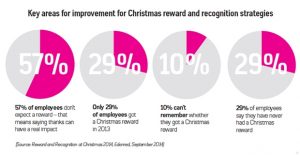— March 8, 2019
When it comes to identifying and developing future leaders, ignorance can be costly. Without a robust succession strategy in place, companies run the risk of spending valuable resources promoting leaders who turn out to be the wrong fit and must ultimately be replaced.
Unfortunately, many companies struggle to get a handle on succession. With about 10,000 Baby Boomers becoming eligible for retirement each day, identifying high-potential Millennial and Generation X candidates has become integral to the success of any leadership pipeline.
And in many ways, the future of the workforce is already here. Millennials became the largest generation in the US labor force when they inched past Gen Xers in 2016, having already surpassed the fast-falling Baby Boomers around 2013. With Generation Z now entering the workforce in large numbers, companies need to start accounting for these shifting demographic trends in their succession planning.
Attracting and retaining top talent is among the ten most critical risks today’s organizations face, according to a 2017 Aon Hewitt Global Risk Management Survey. Despite this, a 2016 Global Human Capital Trends report by Deloitte found that 56 percent of executives believed their companies were “not ready to meet leadership needs.” To make matters worse, a subsequent 2017 Deloitte study found that organizations were not making progress in this area. This makes it more likely that candidates will step into leadership roles without the skills they need to be effective leaders.
Without a comprehensive succession plan in place, companies can make costly promotion mistakes. Here are the most common succession planning issues and how to overcome them.
Issue #1: Promoting the Wrong Candidates
Knowing which candidates to promote into leadership roles is not an easy task. There are many criteria to take into consideration, and companies often look at subjective factors rather than objective data when gauging potential. When candidates are not measured the right success profile, companies waste time trying to develop the wrong talent. This can result in higher costs due to leadership turnover and the need to recruit new talent.
Solution: Know What Good Looks Like In Your Organization
Some qualities are easy to identify, such as interpersonal skills, the ability to manage others, and an understanding of organizational dynamics. These traits can be learned over time, but there are some essential characteristics of leaders that cannot be easily taught. Leadership traits aren’t always obvious. For instance, an individual may say he is capable of remaining calm under pressure, but he may not reflect this in response to a high-stress situation.
A rigorous assessment process that includes multiple forms of evaluation, such as behavioral interviews, leadership questionnaires, and situational judgment tests, will yield more accurate results than asking managers to select their top candidates. High-performance in a position doesn’t necessarily mean a candidate will be successful in a leadership position.
Issue #2: Not Engaging High-Potential Employees
To become a successful leader, employees must have the aspiration as well as the ability to lead. Those who do aspire to a leadership position also need to be actively engaged in the organization and feel they are being supported at every step along the way.
Solution: Provide Ongoing Development
Organizations should take the time to engage in an ongoing dialogue with high-potential employees and provide them with the development opportunities they need to succeed. The Millennial generation, in particular, appreciates regular feedback on what they can do to improve their performance. In general, most Millennials also appreciate being paired with a mentor who can provide frequent, specific feedback and coaching.
Issue #3: Failing to Measure Success
Without a consistent way to measure the impact of succession management, companies might very well be repeating the same mistakes over and over, wasting time and money.
Solution: Evaluate Your Efforts
The best way to measure a succession strategy’s effectiveness is to monitor metrics such as turnover and retention of high-potential employees over time. Other key figures to monitor would include the number of candidates who are eventually promoted, the costs saved by not having to recruit outside candidates, any changes in business unit performance owing to improved continuity, and the overall level of employee satisfaction.
Reviewing aggregate data can also identify areas of a succession strategy that need improvement. If candidates are not meeting their potential, it may be worthwhile to overhaul development programs to ensure smoother successions in the future. Ongoing assessments and feedback could also be used here to monitor the ongoing health of leadership training and development efforts.
For any competitive industry, having the right leadership in place can mean the difference between success and crises. By identifying potential challenges in a succession strategy and implementing measures to address them before they become a problem, companies can ensure the long-term health and success of their leadership pipelines.
Business & Finance Articles on Business 2 Community
(80)







